ESA's Rosetta Spacecraft Comet Landing: Live News Updates
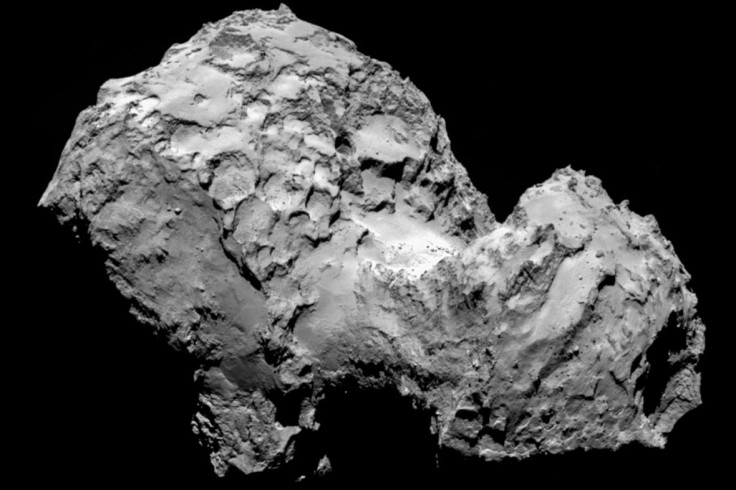
The European Space Agency will today attempt something never before done – landing a probe on a moving comet about 315 million miles from Earth.
The Rosetta Mission was first launched in 2004 and a decade on, scientists will be waiting with bated breath for the Philae lander to separate from Rosetta and make its final descent to comet 67P/Churyumov–Gerasimenko.
Join IBTimes UK for updates throughout the day on Rosetta and the comet landing.
Key points
- Philae has successfully landed on comet 67P
- Problems with the active descent system were discovered last night but the ESA decided to push ahead. The landing was described as "soft".
- There are ongoing problems with the harpoons used to anchor Philae to the surface
- There are currently intermittent signal problems, delaying the first images from being released
- The event has been hailed as a huge achievement for mankind
- Jean Jacques Dordain, director general of the ESA said: "We are the first to do this - and that will stay forever."
17.51
An image of the comet when Philae was just a few kilometers from the surface has been released. Signalling problems and issues with the harpoons are ongoing. Philae is now expected to conduct its next manoeuvre at 7.30pm. It is not known when the first pictures from the surface will be published.
Meanwhile, @ESA_Rosetta set to conduct its next manoeuvre at 1930UTC on board #CometLanding
— ESA Operations (@esaoperations) November 12, 2014
.@ESA_Rosetta See for yourself! ROLIS imaged #67P when we were just 3km away! Glad I can share. #CometLanding pic.twitter.com/b6mcid2fsn
— Philae Lander (@Philae2014) November 12, 2014
17.26
Touch down
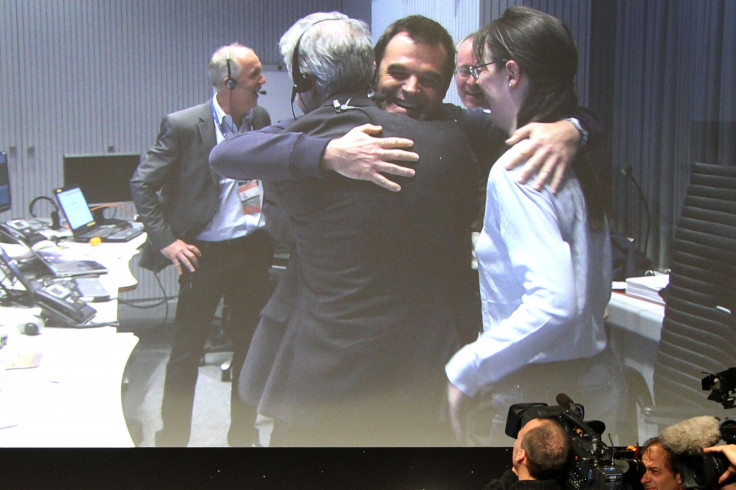
17.20
When Philae touchdown was confirmed, there were 10,000 tweets per minute about the comet landing.
17.13
Paolo Ferri, head of mission operations at the ESA, has now said the harpoons did fire but it is not clear if they are secure or not, the Guardian reports. The signal from Rosetta is currently intermittent but this should be resolved soon: "We have no reason to think it won't work, but we have no understanding of why it is doing this."
16.50
Analysis has shown Philae had a soft landing. However, there are concerns it is not fully attached to the surface of the comet because the harpoons did not fire as expected.
More analysis of @Philae2014 telemetry indicates harpoons did not fire as 1st thought. Lander in gr8 shape. Team looking at refire options
— ESA Operations (@esaoperations) November 12, 201416.44
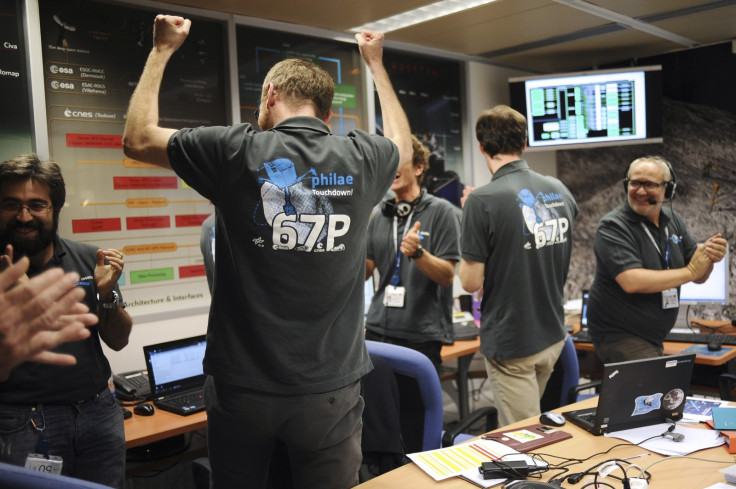
16.39
Jim Green from Nasa said: "How audacious, how exciting, how unbelievable to be able to dare to land on a comet. To take that step from a scientific perspective.
"[The Rosetta mission] has allowed us all to participate in that great adventure. This is the start of something important. The Solar System is ours. Let's learn about the environment we live in. I truly believe a single planet species will not survive long. It's our destiny to move off this planet."
16.28
"We're are on the comet!" #cometlanding
https://t.co/c6xIWJp0TR
— ESA (@esa) November 12, 201416.26
Marc Bertschi, head of the Swiss Space Office, speaking of the achievement: "We can do this when we work together."
16.18
Jean Jacques Dordain, director general of the ESA said: "We are the first to do this - and that will stay forever."
16.15
RECEIPT OF SIGNAL FROM SURFACE European Space Agency receiving signals from @Philae2014 on surface of comet #67P/CG #cometlanding
— ESA Operations (@esaoperations) November 12, 2014
Harpoons confirmed fired and reeled in. Flywheeel will now be switched off. @Philae2014 is on the surface of #67P #CometLanding
— ESA Operations (@esaoperations) November 12, 2014
16.13
Touchdown! My new address: 67P! #CometLanding
— Philae Lander (@Philae2014) November 12, 201416.10
Confirmation - Philae has landed on comet 67P
"Philae is talking to us. The harpoons have fired and the landing gear is inside. Philae is sitting on the surface and is talking to us. We are on the comet."
16.07
Philae appears to have landed. Tentative scenes from the ESA.
15.54
The ESA said that if expected touch down took place at 3.34pm, then the signal should already be on its way back to Earth.
15.47
Just over 10 minutes to go. Watch live here
15.39
Critical events for the comet landing
First the lander will begin imaging the landing site and conduct its final pre-touch-down operations. The landing window will then be open.
Upon landing, two harpoons will fire to secure the lander.
The Civa imaging system will be switched on and the first pictures from the surface of the comet will be transmitted.
At this point, scientific observations will continue and the lander will begin gathering data about the descent and initial surface observations, which will be relayed back to Earth via Rosetta.
The First Science Sequence will last for about seven hours, which will bring the first communication window to an end. Read more here.
15.32
Farewell @Philae2014 - all 3 images now live in the blog #cometlanding http://t.co/87Z5CiwZKK pic.twitter.com/7QYX993gGL
— ESA Operations (@esaoperations) November 12, 201415.28
Just a reminder of how incredible the Rosetta mission is – Scientists are preparing to land a spacecraft the size of a washing machine onto a comet travelling at 40,000mph ... 310 million miles from Earth.
15.16
15.11
Experts have said that after the comet landing window opens at 4pm GMT, it could take up to 40 minutes to receive the first signal.
Meanwhile, Holger Sierks, principal investigator for Rosetta's cameras, explained what Philae will do after anchoring itself to the comet: "It will sample the surface, it will drill into it and analyse the material it sees," he told the BBC.
"It even carries it into an oven and bakes the material to 'sniff' the volatiles [chemical elements], to find out if there are organics in there, pre-biotics or building blocks. For us, we'll find volatiles, the water, and even link the water to the water we have here on earth."
14.55
Another picture just in. This one shows Philae from Rosetta's Osiris camera.
I see you too @philae2014! Here you are in my OSIRIS camera - legs out! #CometLanding pic.twitter.com/hmnfe2AkN2
— ESA Rosetta Mission (@ESA_Rosetta) November 12, 201414.39
Flight director Accomazzo: We're receiving good signals from both spacecraft. @Philae2014 trajectory looks good #cometlanding
— ESA Operations (@esaoperations) November 12, 201414.32
The ESA has confirmed touchdown is expected at 4.02pm GMT.
14.31
Nice one! I’ve never seen you from this angle before, @ESA_Rosetta! #CometLanding
— Philae Lander (@Philae2014) November 12, 201414.22
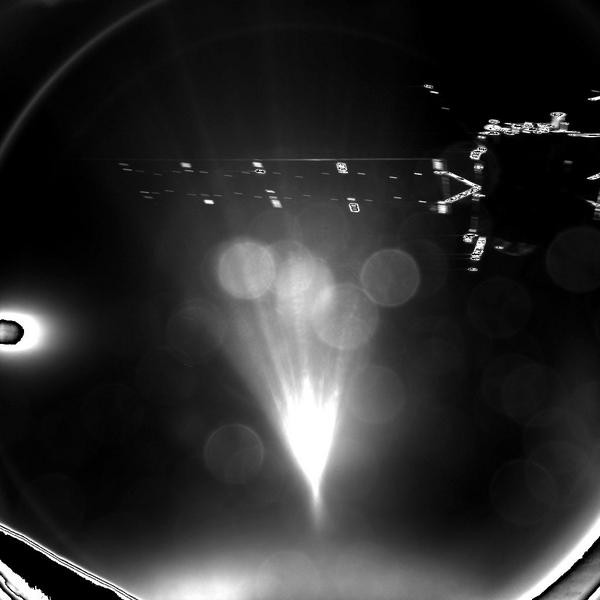
14.19
First photo from Philae
.@philae2014’s first postcard just after separation – it’s of me!
#CometLanding
Credit: ESA/Rosetta/Philae/CIVA pic.twitter.com/OXJwGunL3V
— ESA Rosetta Mission (@ESA_Rosetta) November 12, 201414.12
The ESA has resumed its live broadcast ahead of the landing.
Philae landing – what could go wrong?
Andrea Accomazzo, flight director for the European Space Operations Center (ESOC) in Darmstadt, Germany last week said there are "three pillars of danger" when it comes to landing safely on comet 67P.
While this has probably increased to four pillars after the active descent system failed in testing yesterday. This means the thrusters created to steady the landing will not be available to soften the impact.
But what are the other concerns?
Firstly, the lander must drop in exactly the right place – ESA said it was in the right trajectory when it was released, but even the most miniscule error will affect the landing. "If there is an error in the velocity by 1cm per second, it will be propagated over the seven hours so that it winds up being an error of a couple hundred meters. This is the first pillar," the LA Times quotes him as saying.
Next, the surface on which Philae lands is not ideal – it is a rough terrain with huge boulders and sharp drops. There is also no way to steer the lander. "This is the part that worries me the most because we have no control over it. All the other processes are our responsibility and we are prepared."
Another issue is that Rosetta and Philae must remain perfectly synchronised – if they do not they will be unable to return signals to Earth. However, Accomazzo said even if the landing fails, the mission has already been a success: "The science is already meeting or even exceeding our expectations."
13.29
The first images from Philae are about to come in to the ESA. They will be from the CIVA (Comet nucleus Infrared and Visible Analyse) camera on board Philae. CIVA is a set of instruments created to take 360 degree panoramas from Philae. Read more about the camera at Nasa's website.
13.22
As Philae continues to descend, the ESA has provided a helpful guide as to how to pronounce the landings site Agilkia (formally Site J). The landing area is named after the island on the Nile river where the Temple of Isis now sits.
Agilkia is of Greek origin, so the ESA asked a Greek expert to explain how to pronounce it. They confirmed it should be said with a 'hard G' – so phonetically should be said a-Gil-Kia.
13.10
Astronaut Chris Hadfield tweeted a message of support for Philae.
A thistledown the size of a washing machine is falling to a gentle crash-landing on a comet. My finger are crossed. pic.twitter.com/TxzAjypaua
— Chris Hadfield (@Cmdr_Hadfield) November 12, 201413.07
Dr Daniel Brown, an astronomy expert at Nottingham Trent University, said Rosetta has already made history by orbiting its target and gathering information about the composition of the comet.
"Now it is vital to analyse the comet's interior, since it contains the initial composition of the solar system from when it was formed 4.5 billion years ago," he said."It might also contain amino acids such as glycine and other complex molecules. These results will allow us to improve models for the solar system and to better understand how a planet becomes habitable.
"Viewers are extremely privileged to be granted this insight into space history being written. The first mission to land on a comet, you can't get more ambitious that that – or can you?
"Next steps for European space exploration will be visiting the icy moons of Jupiter and deploying a telescope looking for gravitational waves detectable as tiny ripples in space time."
12.45
Image showing the size of comet 67P/Churyumov-Gerasimenko in comparison to Paris.
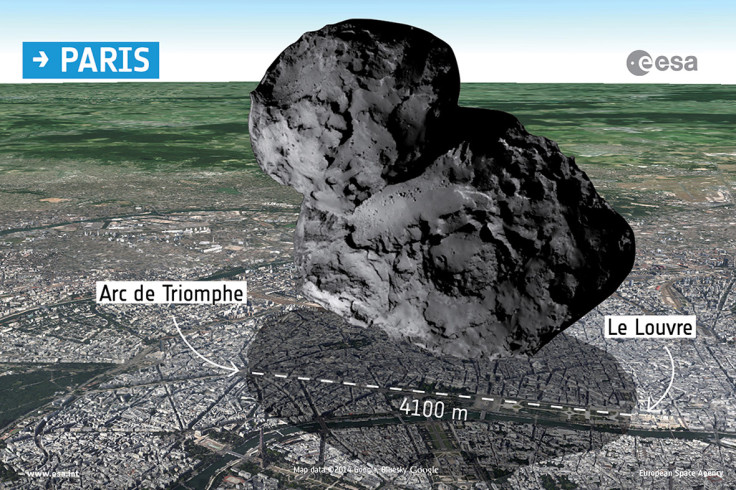
12.37
See the Twitter stats from the separation – at its peak, there were over 700 tweets about the comet landing every minute.
12.10
.@ESA_Rosetta WOW! I feel like I’m floating! And #67P is closer and closer… #CometLanding
— Philae Lander (@Philae2014) November 12, 201412.05
The consert instrument on Rosetta will produce a 3D image of the comet's interior - something like this pic.twitter.com/HLVvewyPWR
— Space Boffins (@Spaceboffins) November 12, 2014
11.40
William Shatner aka Captain James Kirk wishes the Rosetta Mission good luck
10.34
Here's one way to pass the time...
Here's our lucky #spaceveg ginger that looks a bit like comet 67P #cometlanding http://t.co/MmesIITnQz pic.twitter.com/ujkZaseb92
— New Scientist (@newscientist) November 12, 20149.54
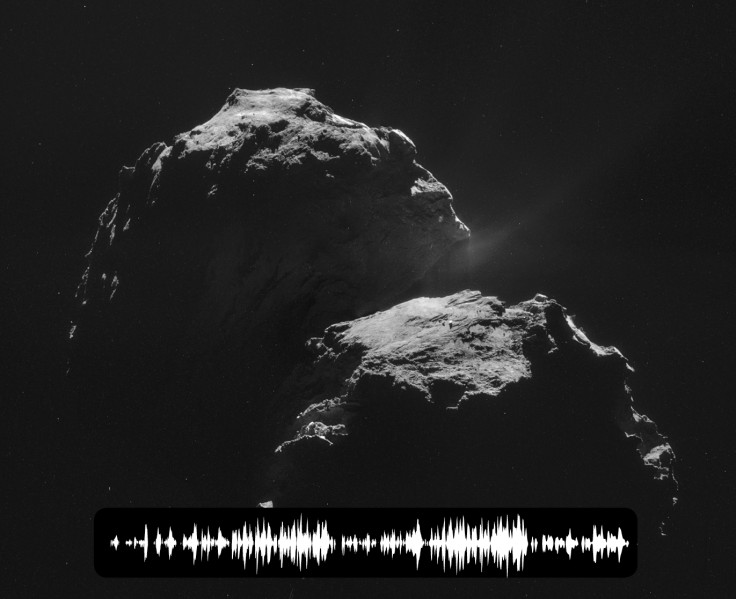
It will be about two hours before we hear anything more from Philae on its descent to comet 67P. However, ESA yesterday revealed Rosetta's Plasma Consortium (RPC) uncovered a mysterious 'song' from the comet – and as first noticed by CNET – it sounds like Predator.
The comet 'song' was identified by RPC principal investigator Karl-Heinz Glaßmeier: The comet seems to be emitting a 'song' in the form of oscillations in the magnetic field in the comet's environment. It is being sung at 40-50 millihertz, far below human hearing, which typically picks up sound between 20 Hz and 20 kHz," ESA said in a statement. "To make the music audible to the human ear, the frequencies have been increased by a factor of about 10,000.
"The scientists think it must be produced in some way by the activity of the comet, as it releases neutral particles into space where they become electrically charged due to a process called ionisation. But the precise physical mechanism behind the oscillations remains a mystery."
9.13
'@Philae2014 is gone - it's on its path down to the comet' -Flight Director Andrea Accomazzo #CometLanding
— ESA (@esa) November 12, 20149.12
Stephan Ulamec, Philae Lander Manager, said there will be "a lot more crucial moments", but that he was relieved separation was a success. "After 10 years we have successfully separated," he said. "The lander is now on its own." Ulamec said the lander should reach the comet in between 6.5 and seven hours, however in the next two hours we should receive the first data from Philae as well as a "farewell image".
On arrival, signals confirming Philae has landed and deployed the harpoons should be relayed back: "Then the real science will start on the surface," he said.
9.05
SEPARATION CONFIRMED! Safe journey @Philae2014! pic.twitter.com/dsM5Xaedzp
— ESA Rosetta Mission (@ESA_Rosetta) November 12, 20149.05
Cheers from the ESA as separation confirmed. Philae has separated from Rosetta and will begin its descent to comet 67P.
9.03
The scene inside the ESA's main control room.
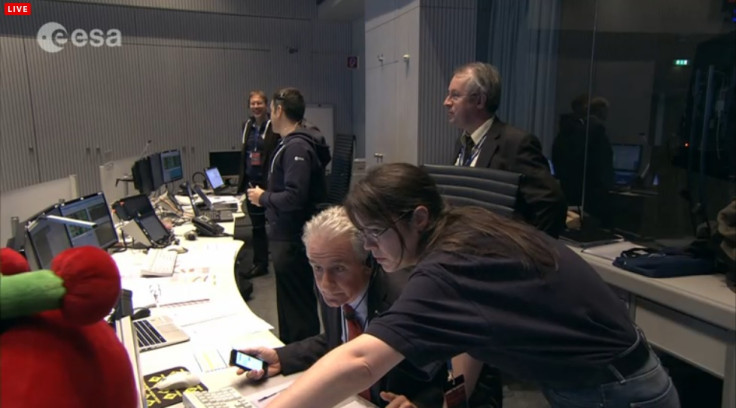
8.55
While we await confirmation of the separation, watch ESA's animation of Philae's landing.
8.45
Comets serve as "time capsules" of the early solar system so can provide information on how our planet evolved. When Philae first arrives it will begin taking photos of the comet, after which it will begin analysing its surroundings.
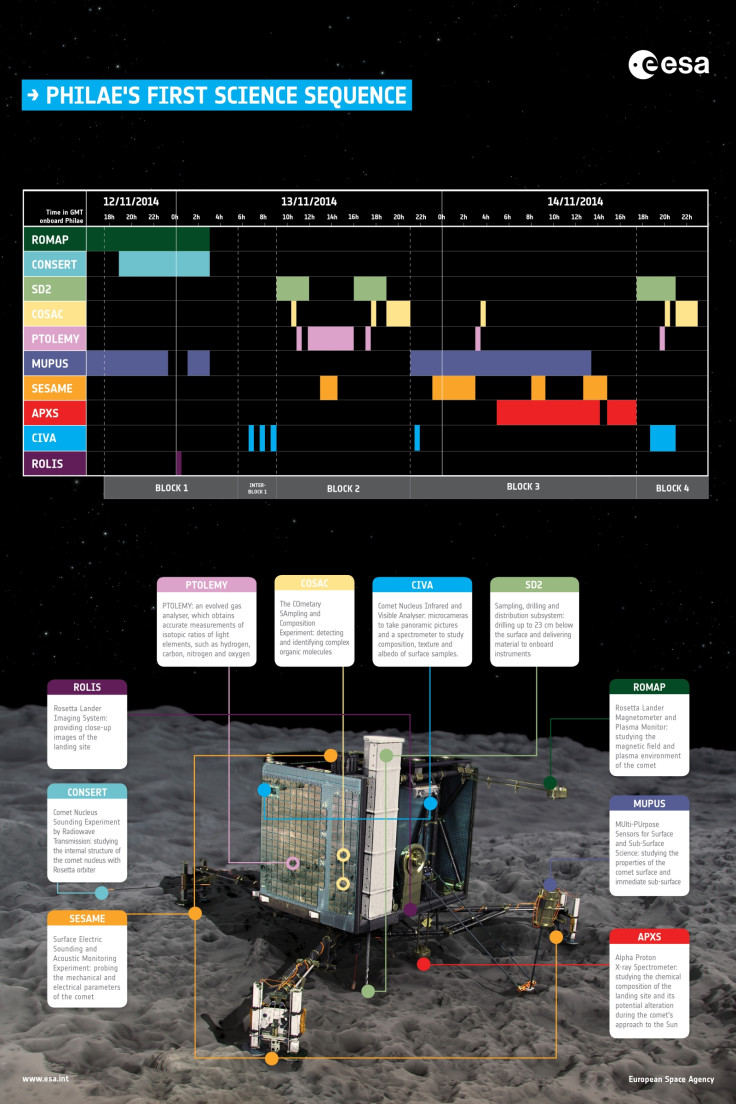
8.39
There is "no going back" as all procedures are automated from now on.
Standby for separation @philae2014… #CometLanding
— ESA Rosetta Mission (@ESA_Rosetta) November 12, 20148.33
Lead scientist Jean-Pierre Bibring has said he is not concerned about the thruster failure. Speaking to Nature magazine, he said that because comet 67P is so much heavier than the comet that was initially chosen for the mission, there will be more gravity to aid the landing. He also said the surface is more likely to be soft than hard, so should absorb the shock and prevent the lander from bouncing. Their bigger concern, he said, is that the lander will go too deep into the surface.
8.20
Separation is due to begin at 8.35am GMT but it will take the radio signals from Rosetta about 28 minutes to reach Earth. Scientists say we should have confirmation the separation was a success by 9.03am.
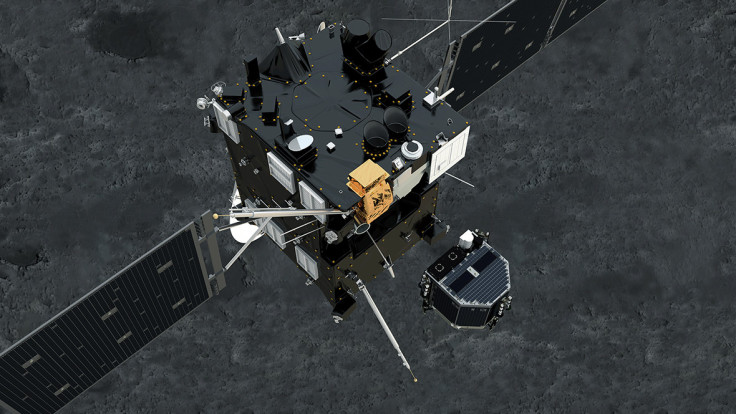
8.16
The comet landing will be broadcast by the Slooh telescope: "This will be the first time ever a spacecraft has landed on a comet. Slooh will broadcast a free, real-time view of the comet after Philae attempts its landing, informing the public of the results as they reach Earth."
The broadcast will begin at 3pm GMT and can be found here.
8.07
Fred Jansen, Rosetta mission manager, said there is a one in four chance Philae will not be successful in landing on the comet. Speaking at mission control in Germany, he told reporters: "We've analysed the comet, we've analysed the terrain, and we're confident that the risks we have are still in the area of the 75% success ratio that we always felt."
7.57
It is now less than an hour before the separation - here is a graphic showing Rosetta's manoeuvres.
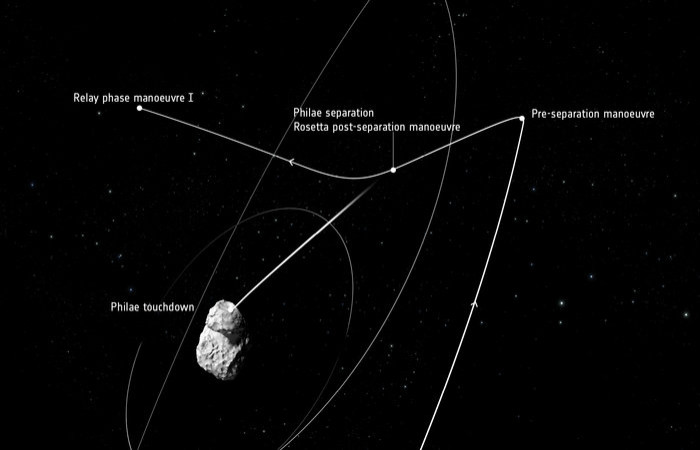
7.34
Experts have said they will be lucky not to land on a boulder or steep slope after discovering a problem with the lander last night.
The problems with the active descent system were discovered last night. The system provides thrust to avoid rebound when Philae lands on the comet.
Ideally, when the lander touches down, the landing gear will absorb the forces of the landing, while ice screws in Philae's feet and harpoons will lock it to the surface. The thruster on top of the lander is supposed to push it down to counteract the rebound from the harpoon – however this system cannot be activated.
Stephan Ulamec, Philae Lander Manager at the DLR German Aerospace Centre, said: "The cold gas thruster on top of the lander does not appear to be working so we will have to rely fully on the harpoons at touchdown. We'll need some luck not to land on a boulder or a steep slope."
7.23
Last night the third Go/NoGo was delayed due to a problem with the lander's cold gas system. Experts have said this could result in the lander having to use harpoons and ice screws to stay anchored to the comet.
Some problems with my cold gas thruster could mean that it might be up to harpoons & ice screws to make sure I stay on #67P #CometLanding
— Philae Lander (@Philae2014) November 12, 20147.15
The ESA has produced an infographic about the descent and landing process. Read more about the timeline of events here.
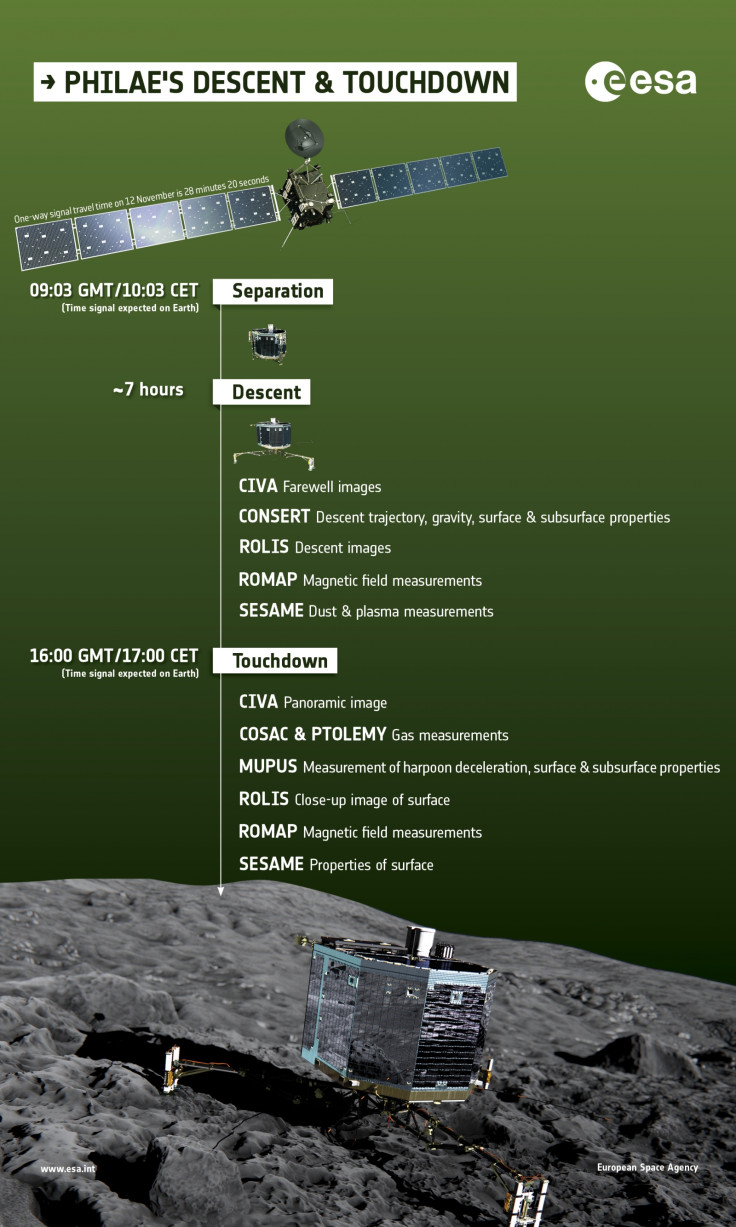
7.13
The ESA has confirmed the final Go/NoGo is complete and everything is in order for Philae to separate from Rosetta.
07.11
#CometLanding is on track! RT @ESA_Rosetta: Final Go/NOGO complete! We're GO for separation!!! pic.twitter.com/mBVifIog20
— ESA (@esa) November 12, 201407.10
To get an idea of how difficult the task of landing on comet 67P is, scientists have compared it to trying to land on a speeding bullet. The comet is moving at speeds up to 135,000km/h, or about 84,000mph.
06.55
The Flight Dynamics Team at ESOC has confirmed that Rosetta and Philae are on the correct orbit and that Rosetta can achieve the delivery trajectory to deliver the lander onto the surface of comet 67P as planned. Read more here.
06.49
It is now just under two hours from when Philae will separate from Rosetta. Watch a live stream of events from the ESA below.
© Copyright IBTimes 2025. All rights reserved.






















